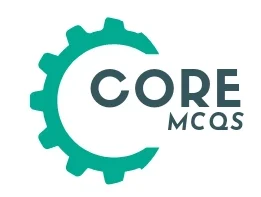12th class (Fsc) Chemistry unit 11 MCQs
76. Rectified spirit contains alcohol about:
a. 90%
b. 80%
c. 95%
d. 85%
77. Ethanol and methanol can be distinguished by:
a. Benediet’s test
b. Iodoform test
c. Tollen’s test
d. Lucas test
78. The optimum temperature for fermentation is:
a. 20-30oC
b. 10-20oC
c. 25-35oC
d. 15-25oC
79. Molasses undergo fermentation in the presence of enzymes:
a. Zymase and sucrose
b. Invertase and zymase
c. Luctase and amylase
d. Diastase and maltane
80. Which enzyme is not involved in fermentation of strach?
a. Urease
b. Diastase
c. Invertase
d. Zymase
81. Which compound is called universal solvent?
a. C2H5OH
b. H2O
c. CH3-O-CH3
d. CH3OH
82. Compound showing maximum repulsion with H2O is:
a. CH3CH2CH2OH
b. C6H6
c. CH3OCH3
d. C2H5OH
83. Which of the following is weakest acidic in nature?
a. Benzoic acid
b. Ethyl alcohol
c. Water
d. Phenol
84. Phenol reacts with acetyl chloride in the presence of a base to form:
a. Ester
b. Benzene
c. Ether
d. Toluene
85. Phenol-formaldehyde resin is called:
a. Orion
b. Bakelite
c. Terylene
d. Teflon
86. 2-hydroxy propanoic acid is called:
a. Citric acid
b. Oxalic acid
c. Aspartic acid
d. Lactic acid
87. An alcohol is converted to an aldehyde with same number of carbon atoms as that alcohol in the presence of K2 Cr2O7 /H2SO2 the alcohol is:
a. CH3CH2CH2OH
b. CH3CL(CH)2OH
c. (CH3)3CHOH
d. (CH3)2COH
88. Which enzyme is involved in the fermentation of glucaose:
a. Urease
b. Zymase
c. Diastase
d. Invertase
89. The dehydration of ethyl alcohol with concentrated H SO at 140 C gives:
a. Alcohol
b. Ethene
c. Carboxylic acid
d. Diethyl ether
90. Ethanol can be converted in to ethanoic acid by:
a. Hydration
b. Oxidation
c. Hydrogenation
d. Fermentation
91. When ethanol is warmed with ethanoic acid in the presence of strong acid catalyst, an ester ethyl ethanoate is formed: CH3CH2OH + CH3CO2 H → CH3CO2CH2CH3 during this reaction.
a. O-H bond in ethanoic acid is broken
b. Alcohol is reduced
c. Acid is oxidized
d. C-H bond in ethanol is broken
92. Consider the following reaction. C2 H2OH + PCI5 → ? What products may be formed?
a. C2H5CI and HCI
b. C2H5CI only
c. C2H5CI and POCI3
d. C2H5CI.POCI and HCL
93. Primary,secondary and tertiary alcohols can be identified and distinguished by:
a. Baeyer’s test
b. Lucas test
c. Silver mirror test
d. Lodoform test
94. Which one the following is indicated by formation of yellow crystals in iodoform test?
a. Butanol
b. Methanol
c. Propanol
d. Ethanol
95. Which one of the following group is indicates when HIC is formed by reaction of ethanol with phosphorous pentachloride?
a. Halide group
b. Amino group
c. Ehydric group
d. Hydroxyl group
96. Which one the following is used as one of the earliest antiseptic and disinfectant?
a. Ethanol
b. Phenol
c. Methanol
d. Ether
97. Which one of the following is not able to denature the ethanol?
a. Pyridine
b. Methanol
c. Acetone
d. Lactic acid
98. How will you distinguish between methanol and ethanol?
a. By oxidation
b. By lucas test
c. By iodoform test
d. By silver mirror test
99. To produce absolute alcohol from rectified spirit, the remaining 4.4% water must be removed by a drying agent such as:
a. Calcium carbonate
b. Calcium oxide
c. Carbon monoxide
d. Calcium chloride
Click here to go directly on chapter no.12
